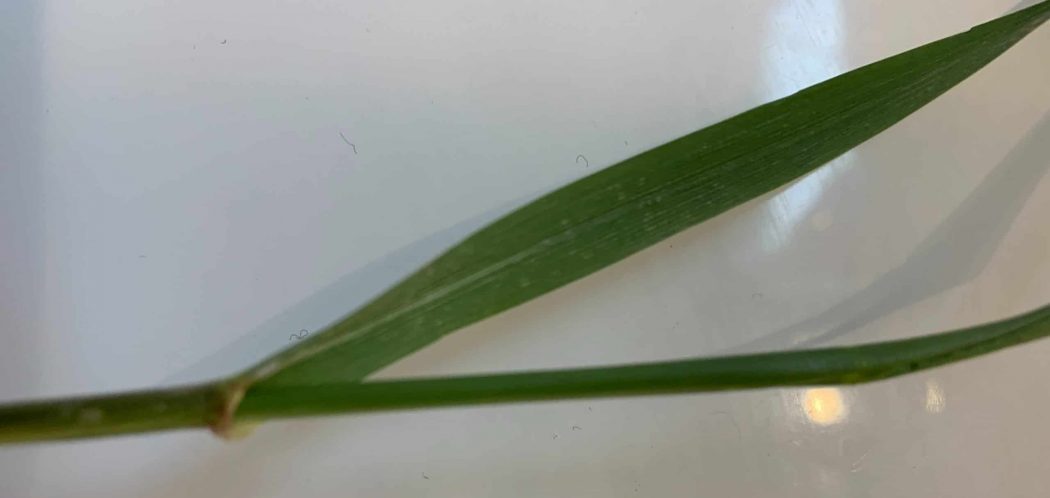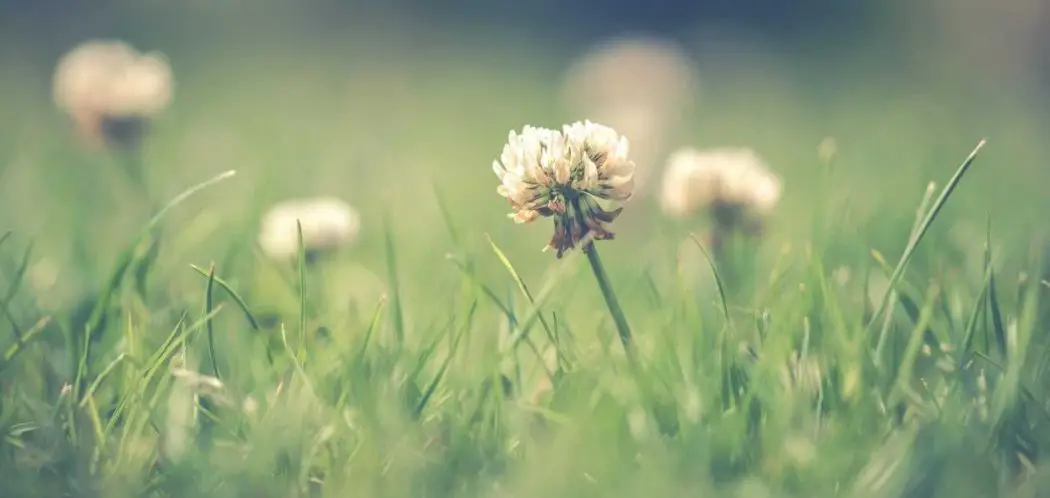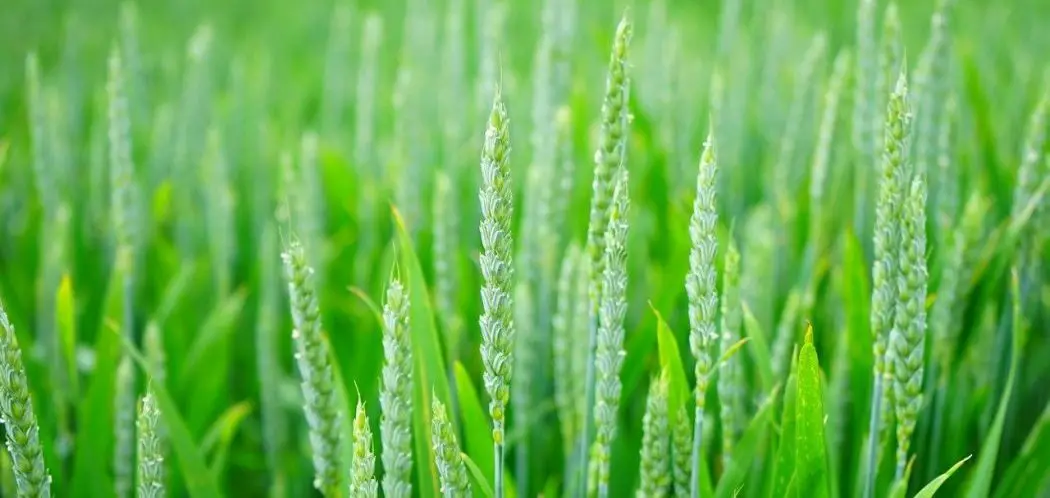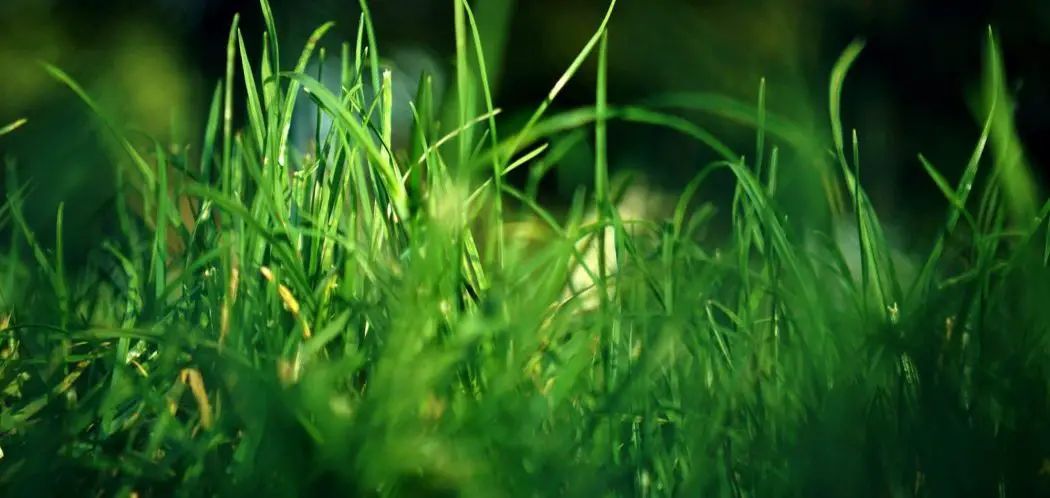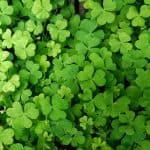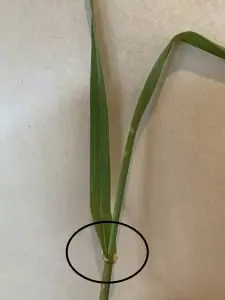
Identifying grassy weeds is a lot harder than identifying broadleaf weeds. Grassy weeds don’t tend to stand out as much from one another so it can sometimes be hard to know what weed you’re looking at.
Quackgrass (Elymus repens) is a cool-season, perennial grassy weed found in many lawns. It’s actually native to Europe, not the US.
This weed isn’t the hardest to identify although you might need to look closely to be sure that it’s quackgrass since it does look a lot like other grass types.
Quackgrass has a very deep root system with rhizomes making it hard to control. It’s one of the worst grassy weeds you can get. It’s aggressive and invasive.
In this article, I’ll show you how to identify quackgrass and I’ll share some strategies to control it.
What Does Quackgrass Look Like?
Quackgrass is a fast growing, grassy weed. The blades are wide and lime green in color. It’s best identified by its claw-like auricles which are structures that wrap around the stem towards the top of the sheath. Another key feature of Quackgrass is its extensive root and rhizome system.
What are auricles you might ask? Auricles are membranous tissue that reside on the leaves. The auricles on quackgrass make it is easier to because they are very well developed and you can see them quite easily which is not always the case with other grassy weeds.
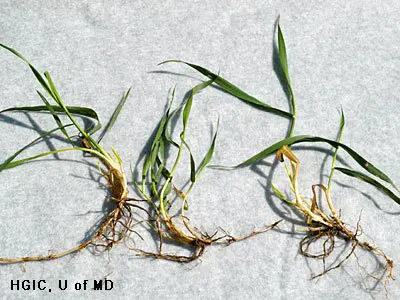
5 things to look for when trying to identify Quackgrass
- Strongly ribbed veins
- Well-developed auricles
- Florets have awns
- Sharp-tipped creeping rhizomes that grow horizontally underground
- Long and thin seeds
Features of Quackgrass
The Blades
It grows much faster than other grass types which makes it quite easy to identify in a lawn. The long wide blades are pretty hard to miss so it can really ruin the appearance of your lawn once it takes over. These blades can grow between 1 and 4 feet tall.
The Florets
The florets of quackgrass look furry because they have lot of small hairs on them. The florets are flat and they look rough rugged but they are not very thick.
If you’re looking at quackgrass, you should see quite a bit of space between the florets.
Formation Pattern
If given the right conditions, Quackgrass can develop into large patches in a lawn. It doesn’t tend to bunch up together like some other grassy weeds.
Root System
It has a fibrous root system. It spreads by rhizomes and by seeds. The rhizomes spread underneath the soil and sprout up every few inches sending new grass to the surface.
As soon as the rhizomes start to move, they begin to develop nodes which are areas
At the end of the rhizome is a sharp which is able to penetrate through harder soil.
The Seeds
The seeds are very long and thin but there are no awns.

Why Is It Important to Identify Quackgrass Correctly?
Quackgrass looks a lot like other grassy weeds. It’s easy to get confused with what you’re dealing with but it’s critical that you identify quackgrass correctly.
Treatments can differ massively between weeds. Some of the weeds that look similar to quackgrass are annuals that can be controlled with a pre-emergent however this treatment will be totally ineffective on quackgrass because it is a perennial.
When Are You Likely to See Quackgrass?
This weed is found in many lawns throughout the growing season. The rhizome development is at its greatest during the mid-summer.
It thrives in the north-eastern part of the US where the temperatures are cooler.
Quackgrass is great at finding the thin spots in a lawn.
Other Weeds That Look Like Quackgrass
Crabgrass
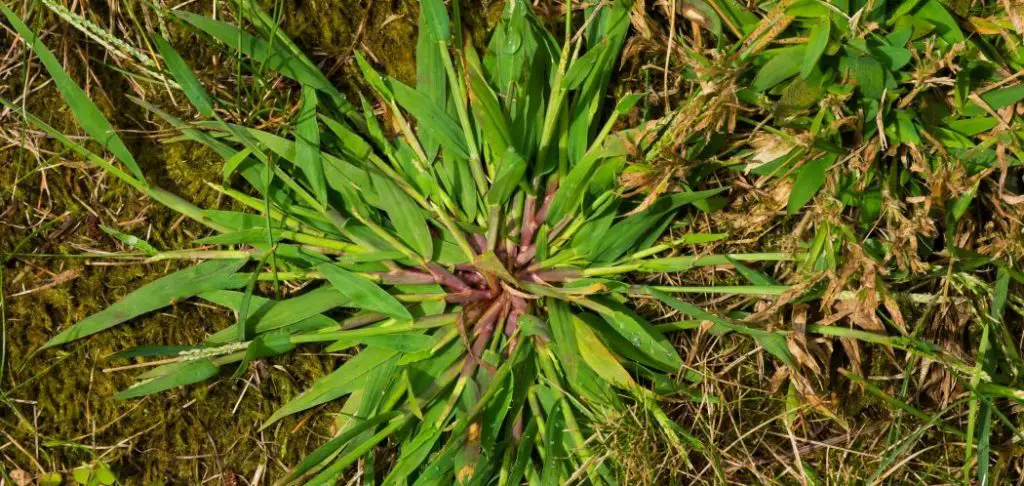
Like quackgrass, crabgrass is a grassy weed that also has lime green leaves.
If you think you have quackgrass, you want to make absolutely sure that it’s not crabgrass because these two weeds need to be treated very differently.
Crabgrass likes warm temperatures so it’s often seen in mid-summer rather than in spring. Pay attention to the time of the year can give you a clue to what weed you’re looking at.
One way to distinguish crabgrass form other grass weeds is the redness at the base of the stems.
It also likely to be seen growing in an area next to pavement or concrete where the surface is warm.
Tall Fescue
Tall fescue is another grass type that look similar to quackgrass.
It’s actually a great choice for a turfgrass for lawn owners in the transition zone. It germinates quickly and it has lower fertility requirements than other cool season grass types.
Tall fescue can be an invasive weed though…
Unlike quackgrass, it tends to grows in a bunch type formation. It doesn’t tend to spread out over the whole lawn. It you peel some of the blades aside, you can see they all come from a single rooting point.
Tall fescue has a very tough fibre. If you look closely at the blades, you should see very prominent veins. If you run your finger along the edge, you’ll feel serrated.
Italian Ryegrass
Another weed often mistaken for quackgrass out on the field is perennial ryegrass aka Italian ryegrass.
Ryegrasss has dark green, glossy leaves that are relatively thin. If you were to feel the leaves themselves with your thumb and forefinger, you won’t feel much in the way of ribs/veins.
The quackgrass leaves are green, but they’re not as dark as the ryegrass. Its definitely not glossy either. The veins are strongly ribbed.
Finally, the auricles of perennial ryegrass are quite weak. Sometimes you won’t see an auricle at all which is very different to the well-developed auricles on Quackgrass.
How to Control Quackgrass
Quackgrass is not something you can get rid of by rototilling. In fact, you can end up making your quackgrass problem even worse. The rhizomes can end up shooting more plants and your problem can spread.
Sometimes the best option is to dig it out. This is best done with a weeder to help to loosen up the soil rather than ripping the roots. I like this one (link to Amazon).
In many cases, you’re going to need to spray roundup. In doing so, you will also kill parts of your lawn too. If your lawn is full of it, you may need to kill off the whole lawn and start over to prevent it from coming back.
I’d recommend the highest labelled rate of roundup you can find.
In Summary
Quackgrass is a grassy weed with long, thick and green blades.
It grows quickly making it stand out from your turfgrass, it often has a little lighter green color than other grass types too.
The top tell-tale signs that you have quackgrass are:
- It’s large rhizomes
- The auricles that hug the stem
The best way to prevent weeds in your lawn is to have a lush, thick turf. A lot of the weeds will only be able to germinate where they have space to grow. Thin and stressed out areas of the lawn are much more susceptible to weed growth. By having a thick, healthy turfgrass, you can crowd out any invading weeds and reduce your dependence on post emergent control.
Here are some of my favorite lawn care products
Thanks a lot for making it to the end of this post! I hope you found it useful. Here are some lawn care products that I use and that I think you’ll also find helpful. These are affiliate links, so if you do decide to use any of them, I’ll earn a commission.
In all honesty, these are some of the basic products that I use and recommend to everyone.
Broadcast Spreader
This Scotts Elite dual rotary spreader is not a professional grade model but it’s excellent for homeowners.
I really like the edge guard on it. It’s really easy to switch on and off so it’s great for going around my driveway and flower beds.
If you’re not looking to spend hundreds of dollars, I’d definitely recommend this model. It spreads out a wide path and is great quality for the cost.
Backpack Sprayer
This 4-Gallon sprayer is my absolute favorite. It sprays for a really long time. I’ve had this sprayer for quite a while and I’ve never had the battery run out.
The adjustable pressure switch is a really import feature to me.
You can order a lot of accessories for this model but I’ve never really found much of a need for it.
Head Aerator
Hand aerators are great for small spots if you’ve got construction debris or a spot that constantly dries out.
You can also fill these holes with organic matter that will hold a bit more moisture.
This one by Yard Butler is an absolute bargain. It pulls nice long cores. I also use it for taking soil samples around the yard!

